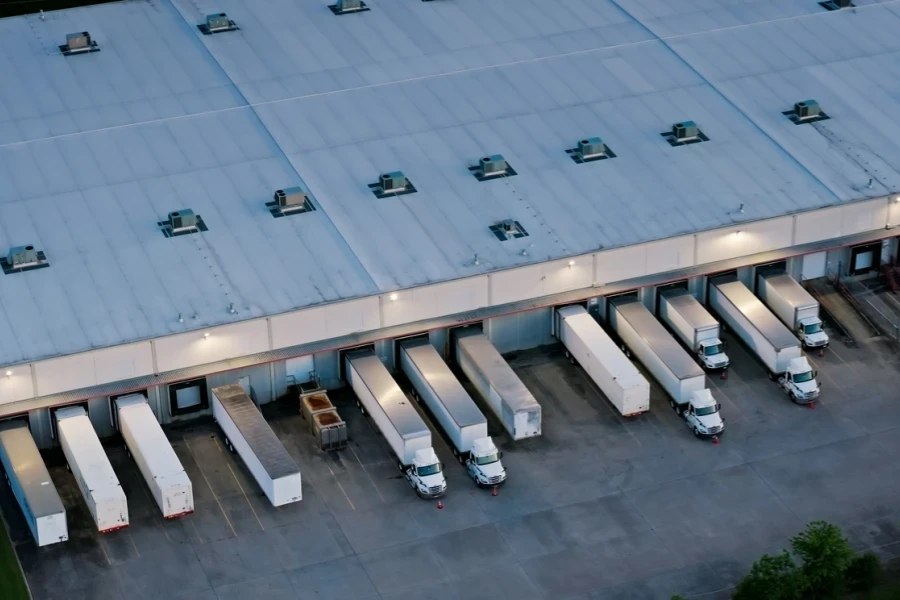Using multiple fulfillment centers (or a multi-location inventory) is a great way to grow your online business as orders increase. By keeping inventory closer to customers, online brands can store more products and ship them faster.
While this sounds like an excellent way to retain inventory, managing fulfillment across different locations can be tricky. That’s because online businesses must track where they store each item, pinpoint the center closest to the customer, check if their country has a fulfillment center, and ensure the order ships from the preferred location.
If your store handles thousands of orders, manually deciding the best way to fulfill each one is a tall task and would take way too much time. After all, a slow fulfillment princess can hold back your business, and that’s the last thing you want.
That’s where smart order routing comes in. This system automatically chooses the best fulfillment location for each order, ensuring faster and more efficient deliveries. Read on to discover everything you need to know about this convenient fulfillment process and how it can help your business in 2025.
Table of Contents
Smart order routing: What is it?
The order process
Why smart order routing is a game-changer
1. Reduces shipping costs
2. Orders arrive faster
3. Reduces the “split order” problem
4. Keeps orders inside the customer’s country
How to set up smart order routing
1. Prioritize shipping from the closest location
2. Keep shipments in the same country
3. Minimize split orders
4. Rank your fulfillment centers
Wrapping up
Smart order routing: What is it?

Smart order routing is like a control system that automatically sends orders to the most convenient fulfillment centers, ensuring fast and efficient deliveries. This incredible system follows set rules to find the best shipping option and can help businesses speed up deliveries, cut shipping costs, and balance inventory across multiple locations.
Below are four things the system will check before deciding the best route to take:
- Which warehouse is closest to the customer?
- Which location has all the items in stock?
Is there a warehouse in the customer’s country?
- Which warehouse has higher storage costs?
Instead of you (or your team) making these decisions manually, smart order routing does it instantly for every order. Here’s how it works.
The order process
1. The customer places the order with their preferred shipping mode (e.g., express)
2. The e-commerce platform quickly sends all the details to its order management system (OMS)
3. The OMS uses smart order routing while considering the following factors:
- Customer shipping preference
- Shipping pin code
- Order brand
- Maximum order weight
4. After considering these factors, the OMS identifies the best way to ship following these rules:
- The closest shipping location
- Prioritizes fulfillment centers to reduce order splitting
- Focuses on higher-ranked fulfillment centers
5. Following these rules, the OMS will choose the fulfillment center that meets all the requirements (e.g., the closest location, a high-ranked facility, and stocked inventory)
Why smart order routing is a game-changer
1. Reduces shipping costs

Shipping from the wrong warehouse is a surefire way to lose money on shipping costs. Here’s an example: Let’s say a customer in Texas places an order. You have the item in your Florida warehouse and your Arizona warehouse. If your system randomly chooses Florida, you’re now paying for a longer shipping route when you could’ve just shipped it from Arizona for half the cost.
Multiply that by hundreds (or thousands) of orders, and you’re throwing money away on unnecessary shipping fees. Smart order routing avoids this by always choosing the closest fulfillment location, cutting down shipping costs every time.
2. Orders arrive faster
Nobody likes waiting forever for a package, especially when they know Amazon can deliver stuff in two days or less. With smart order routing, you’re always shipping from the closest location, which means:
- Faster deliveries
- Fewer “Where’s my order?” emails
More repeat customers
It’s simple: Fast shipping wins more customers, and smart order routing ensures you’re always shipping the quickest way available.
3. Reduces the “split order” problem

Have you ever had an order shipped from two different locations because one warehouse had half the items and the other had the rest? That’s called a split shipment, and it can be a profit-killer.
That’s because, instead of paying one shipping fee, you pay two separate shipments for the same customer. Smart order routing fixes this by prioritizing warehouses that have all (or most) items together, allowing you to ship orders as efficiently as possible.
4. Keeps orders inside the customer’s country
If you ship internationally, you already know that customs can be a nightmare, duties and import fees can drain your profits, and cross-border shipping can take forever. Smart order routing helps prevent such issues by prioritizing domestic fulfillment centers and keeping orders within the same country whenever possible.
How to set up smart order routing
Setting up smart order routing is easy, especially if you use Shopify or Eshopbox. However, you’ll need to understand the four main rules to ensure the system to works exactly as required. Here’s what to know when setting up smart order routing:
1. Prioritize shipping from the closest location

This rule helps your e-commerce platform automatically check the distance between your warehouse and the customer’s delivery address. Then it will choose the closest option to help keep shipping costs down, as shorter distances mean lower fees and shorter delivery time (for a better customer experience).
Note: This rule will help you save money if you cover shipping costs. But if the customer covers it, the lower shipping costs may give them a reason to purchase again and boost loyalty.
2. Keep shipments in the same country
Setting a rule to keep fulfillment within the customer’s country is a good idea. International shipping is notorious for adding extra costs (like duties and taxes), making it more expensive for the seller and customer.
On top of that, many shipping carriers transfer packages to a local carrier when moving orders across borders. This switch can lead to tracking issues or even lost packages.
If your business operates in multiple regions, consider prioritizing this rule to ensure smoother, more reliable deliveries. The only exception to this rule is when the nearest warehouse is in a different country.
3. Minimize split orders
Businesses with multiple warehouses will have their inventories spread out. So, not every location will have all the items needed for an order. However, this rule helps direct the order to the warehouse with most (if not all) items.
Note: Reducing split shipments will help you save on shipping costs by sending the order in a single shipment instead of across multiple shipments.
4. Rank your fulfillment Centers

This order routing rule lets you see a priority for your fulfillment locations. For instance, you may prefer shipping from warehouses if you have warehouses and physical stores. However, if the item is not loctaed in the selected warehouse, the system will switch to the store as a backup option.
Alternatively, you can prioritize fulfillment locations based on storage costs. If one warehouse is more expensive to store inventory in, it makes sense to ship from there first to clear stock faster. This rule also lets you group locations with the same priority. For example, if warehouses A, E, and C are your top choices, you can rank them as #1, while warehouses D, B, and F can have the #2 rank. The goal is to show the system which locations to check first.
Wrapping up
Manual fulfillment decisions might work when you’re starting a new online business, but manual fulfillment can become a bottleneck once you’re handling dozens, hundreds, or thousands of orders. Instead of wasting time, smart order routing can do most of the heavy lifting, helping to ship orders in the fastest, cheapest, and most efficient way possible.




